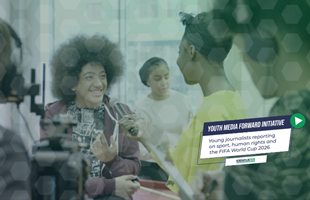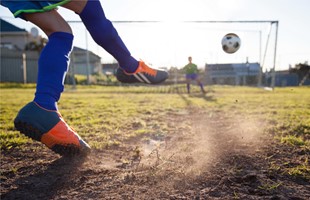Return to Play: Sport’s COVID-19 responses need to include the human rights of children and youth

We’re only beginning to understand how COVID-19 will change every aspect of our lives. As the pandemic continues with no clear end in sight, economic pressures and media attention are now turning public dialogue to how best to “open up” and move on with daily activities, even with the threat of the virus still very much present.
In the area of sport, that conversation is dominated by questions over when and how it will be safe for major sports leagues to “return to play”. Elite sport’s efforts to respond to COVID-19, and in ways that protect the health and safety of athletes as well as other affected groups, including workers and fans, are critical and newsworthy.
But my thoughts these days keep turning to the rights of another impacted group – our children and youth - and how we can best protect them during these difficult times.
How will sport look for our children and young people in the months and years ahead? And how can we use this crisis moment to build back “better” so that when we finally make it to the other side of the pandemic, an activity that is so important to so many can play an even more positive role? These might seem to some to be among the least important questions to prioritize at present, but we would be wrong to underestimate the critical role sport plays for children and youth around the world.
In my country of origin, the United States, the COVID-19 outbreak continues, where normally kids and families would be eagerly making their summer plans as the end of the school year approaches. Of course, this summer, young people here and in many other countries likely won’t have the chance to be with their friends for soccer games or little league baseball. Kids will find it more difficult to gather safely outdoors for afternoons in swimming pools, on basketball courts or for play in public parks. COVID-19 is simply too dangerous a threat in many places, and will require us all to come up with more creative ways to ensure kids stay physically active, often without the benefit of organized group sport.
There are a number of useful resources to help parents and kids cope and engage in physical activity during these days. But we can’t forget the responsibilities we all have - governments in particular - to protect the physical and mental health of all children. Far too often, the poor and most vulnerable are excluded when decisions are made on programs and public services, including sport activities. According to the Aspen Institute, only 22% of children ages 6 to 12 from homes with incomes under $25,000 a year played sports on a regular basis, compared to 43% of kids from homes earning $100,000 or more a year.
In the presence of this economic and social divide, decisions are being made now - with little to no public debate - on how public funds will be spent for COVID-19 response and recovery efforts. Decisions governments are making today could and likely will have serious implications for youth sport and physical activity in the time ahead. Grassroots sport is particularly vulnerable to being negatively impacted, and along with it, those who are economically disadvantaged.
Those who work in the youth sport industry, just like many others connected to the world of sport, face severe disruptions and continued operational costs as their programs remain closed due to COVID-19. Last month, over 100 youth sport organizations in the US came together calling on the government to establish a US$ 8.5 billion economic stabilization fund for providers in the industry.
There are clearly many difficult decisions ahead in efforts to bring organized sport back at every level. It is in the face of this challenge that decision makers – be they government officials at the municipal, state or federal level – or senior executives at sport governing bodies – should consider two important aspects when weighing decisions on how to support the reemergence of sport:
- First, have those impacted - in the case of youth sport that means children and their parents at a minimum - been consulted and actively engaged in the process of deciding how to return to play?
- Second, is any assistance or policies for re-starting sport fully acknowledging and addressing existing inequalities already present in sport? For example, elite men’s leagues, while important, cannot be saved at the expense of more vulnerable areas of sport, such as those focused on youth and women, people with disabilities or programs for economically disadvantaged populations. Any economic relief for the sport industry should be available, support and benefit everyone, in particular those who are marginalized, lest it set advances in key segments back decades.
Finally, decision-makers should consider how the above two queries – and others in the same vein – can become part of decision-making on sport at every level on an ongoing basis going forward.
We at the Centre for Sport and Human Rights are working with our global network of partners to address the many challenges presented by the COVID-19 pandemic. Our collective aim is to support the world of sport in rebuilding for the benefit of everyone and in ways that respect the human rights of all people, not least our young. That’s why we have to keep our eyes on global goals and commitments like those made in Agenda 2030 which promise each of our children the full realization of their rights and capabilities. We know there is much to be done, and we know what’s needed won’t be achieved without collective action and a commitment to the rights of all people. We hope you’ll join us.



